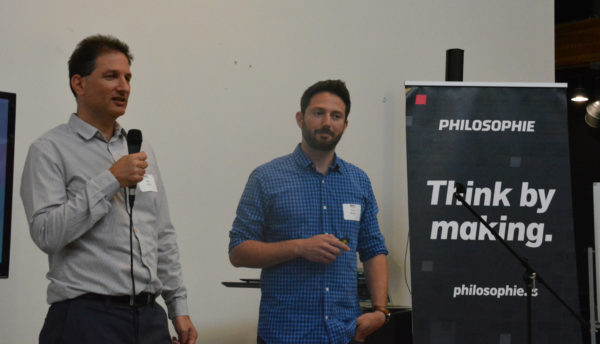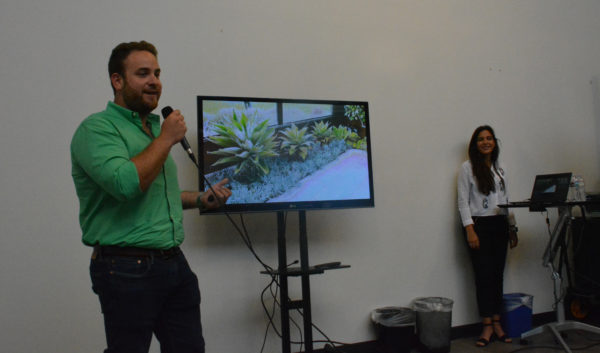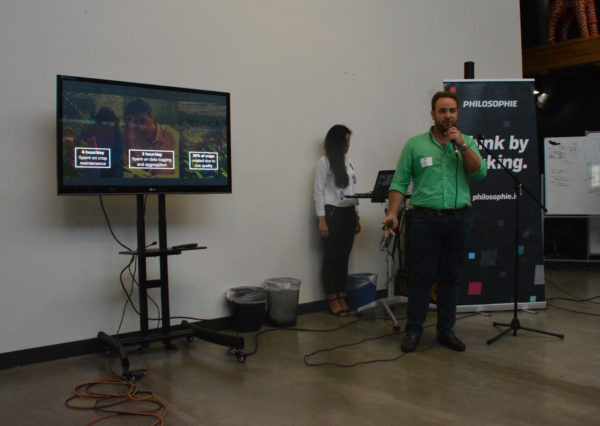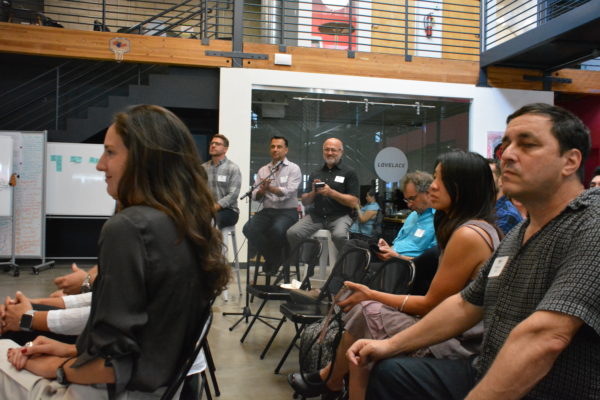by Dot Cannon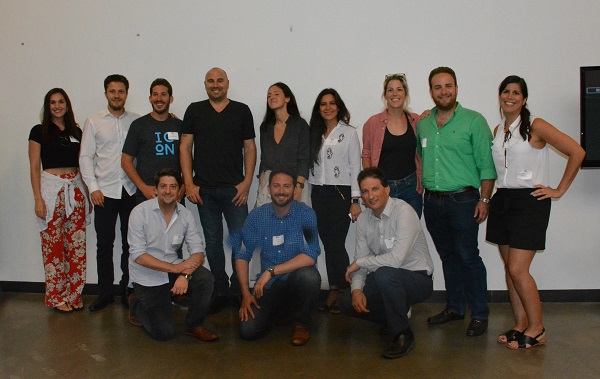
“We like to make this program a safe space for (startups),” said IDEAS™ Immersion founder David Dorfman, at the start of the recent California “Demo Day”.
The July 3rd lunchtime group of entrepreneurs, angel investors and community members, gathered at Santa Monica’s Philosophie product design and development firm, listened expectantly.
In a matter of minutes, three fledgling startups would present their new concepts.
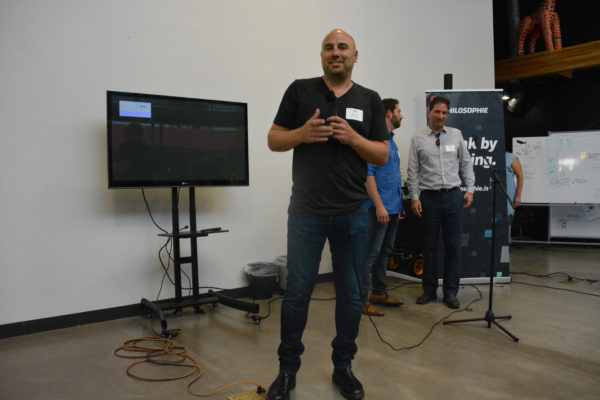
IDEAS™ Immersion, an accelerator project by Tel Aviv University-American Friends, is an immersive program designed to inspire and educate entrepreneurs.
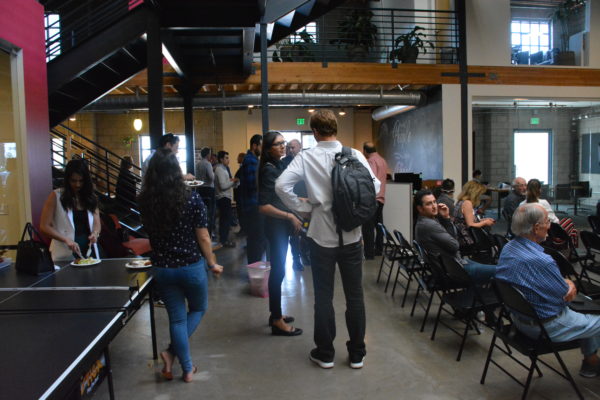
Now in its third year, the program brings Tel Aviv University student entrepreneurs to the U.S. every summer. The purpose: to connect them with American entrepreneurs, investors, community organizations and institutions of higher learning, for networking and education.
Since its start in 2016 as IDEAS Los Angeles, IDEAS™ Immersion has grown. In 2017, they added a two-week session in Chicago to their program. Their California session, meanwhile, takes entrepreneurs to both Los Angeles and Silicon Valley locations.
And in 2018? A new venture fund on the Tel Aviv University campus, just launched this spring.
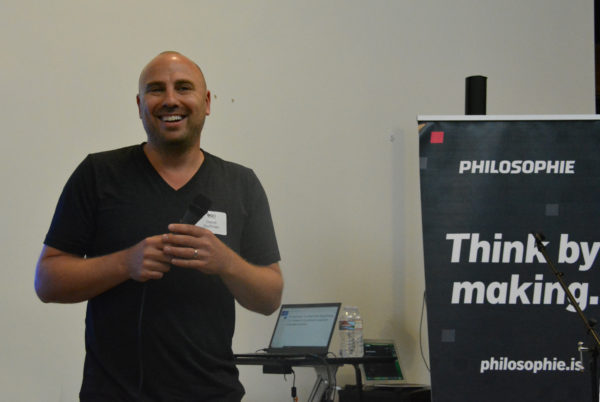
“This program was built out of the fact that Tel Aviv University has become one of the top ten universities in the world…in terms of producing entrepreneurs,” Dorfman said. “We (have entrepreneurs) come to us to help them understand how to build a startup.
“Part of our job in this program is actually to dissuade you.”
The audience laughed. But that “dissuasion” is all about a workable idea.
“We started with five (startups). We’re down to three,” Dorfman continued.
“Not that they’re not dedicated. They’re not ready yet.”
Innovation in progress
So far, Dorfman told the audience, the IDEAS™ Immersion program has showcased fifteen projects, in both California and Chicago. Three of those projects, so far, have gone on to get funded.
Each IDEAS™ Immersion session includes a “Demo Day”, open to the public, for networking and feedback.
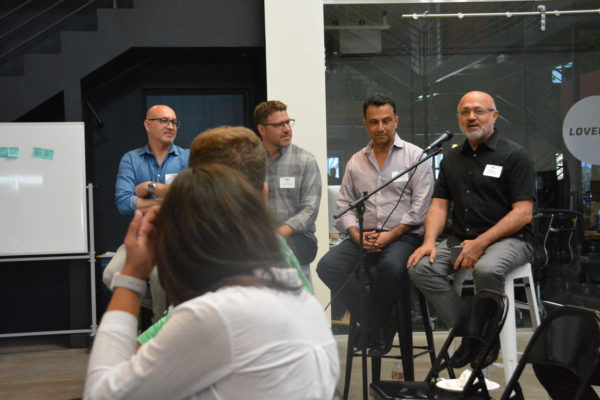
As in the past, 2018 “Demo Day” included a panel of angel investors/board members, who would ask questions and offer feedback after each presentation.
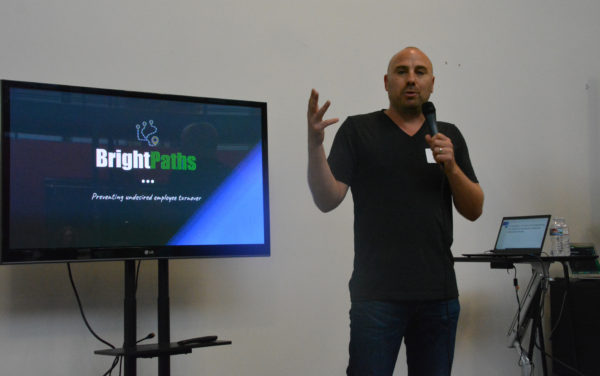
This particular showcase began with a solution to a workplace problem.
“BrightPaths” to employee retention
BrightPaths is a platform designed to help companies retain employees.
“This is the average time we spend (working) at a company,” said BrightPaths co-founder Itay Lotan. “(Two years.) It takes a full year for an employee to become productive.
“A recent study by LinkedIn shows 94 percent of employees would stay, if their companies were more invested in them.”
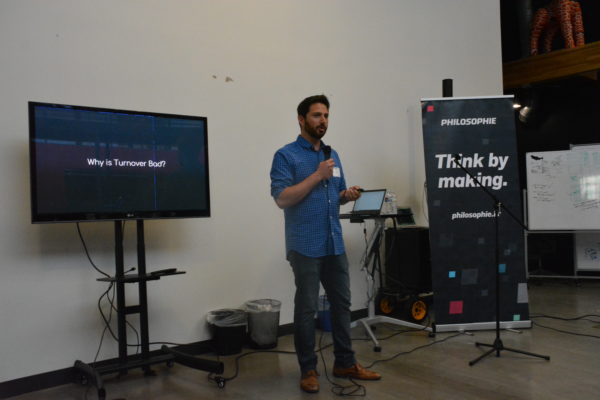
Co-founder Oren Blank explained how BrightPaths could help companies invest in their employees’ futures, through a process he called “career pathing”.
“We collect employees’ skills and competencies. The platform allows employees to (set personal-achievement goals, such as taking a machine-learning course). (A) manager can see (the employee’s) progress, and whether (that person) is on track or not.”
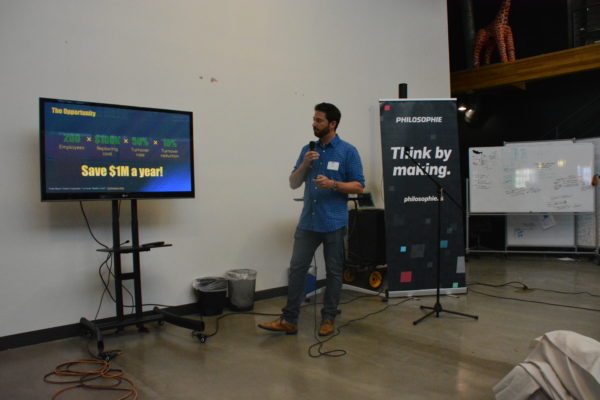
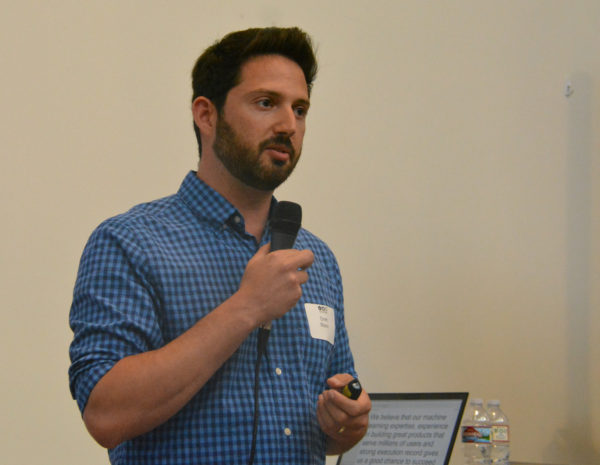
Displaying a slide that cited Huffington Post figures of $100,000 as the cost of replacing an employee, Blank said, “If we could only improve (a 50-percent turnover rate) by ten percent, we could save the company one million dollars.”
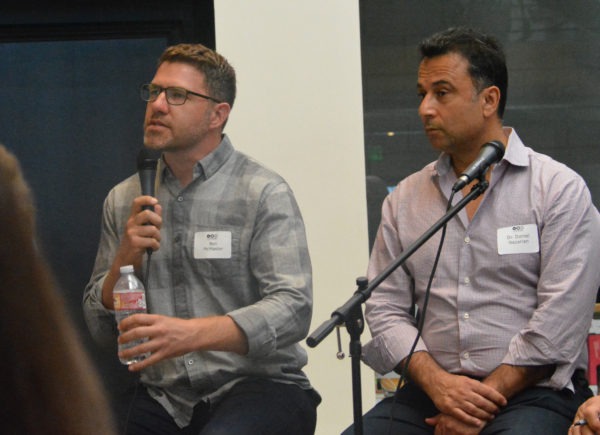
“Do you have any testing?” asked Vimify co-founder and Philosophie Group Engagement Lead Ben McMaster during the Q and A session.
“This is the prototype,” Blank responded. However, he and Lotan said they’d done extensive research with HR professionals, to understand the problem of high employee turnover.
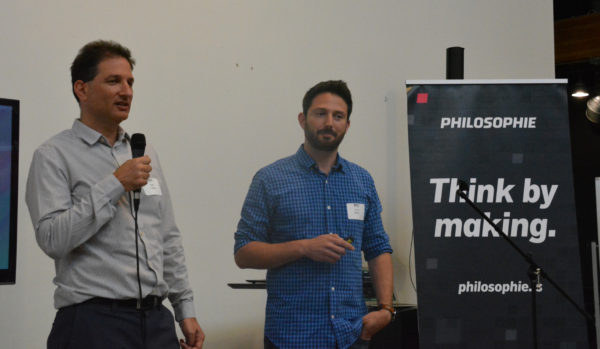
“We’ve interviewed a lot of people over six months,” Lotan said. “”Most of the employees we interviewed said, (‘if they had done this, I would have stayed’), And most of the managers said, ‘I wish I had known that’.
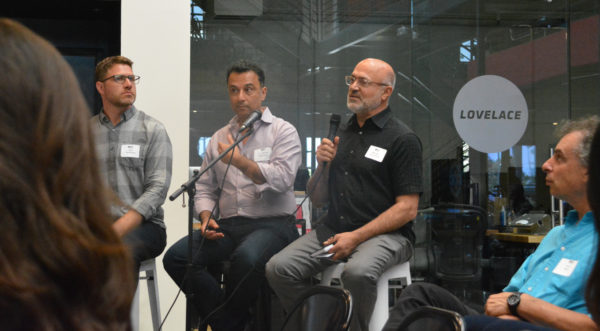
“Have you considered bidding on a certain sector first, then moving on to the others?” asked Maxim Commercial Capital CEO and Cross Campus Chair Behzad Kianmahd.
“The high tech sector first,” Blank replied.
A closer look at crops
Next, two of PlantOptics three co-founders–serial entrepreneur Alexander Joseph and electronics engineer Elif Kara–presented their concept.
“All four of these are planted on the same day,” Joseph said, showing a slide of four differently-sized plants. “There are quality differences, even with genetically-cloned seeds.”
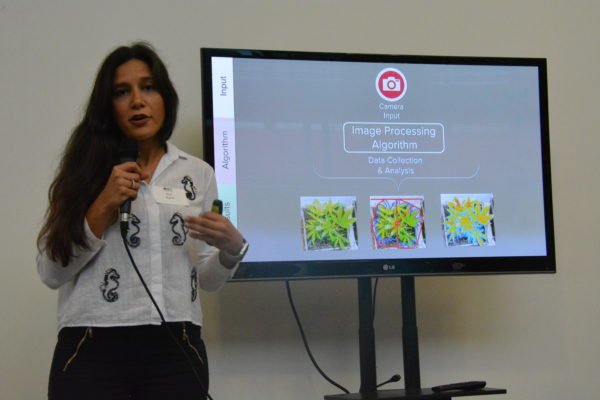
“There are pest, molds and diseases,” Kara added. “(Current solutions, including smart greenhouses) do not provide information at the plant level.”
However, she said, PlantOptics, which is a software that checks plant growth over time, does.
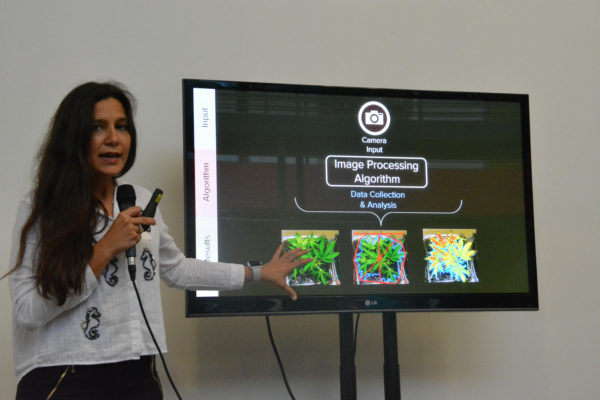
“Our algorithm is able to detect anomalies (not visible to the human eye).”
Kara explained that the software is accessible from any camera.
“So, we developed this simple user interface so you’re able to see all these sensors track (where your plants are now and where they were last cultivation cycle),” Joseph added.
The problem: crop loss
Both the growing U.S. cannabis industry and the fruit and vegetable industries could profit from PlantOptics, he said.
“Twenty percent of (cannabis) plants are lost due to low quality. (And) the U.S. fruit and vegetable market (will top one billion dollars) by 2025.”
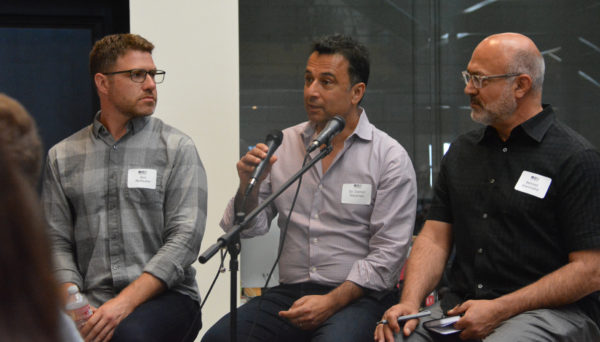
“Are you creating software in a way you can integrate it with the other software (growers) have, or (producing it yourself)?” asked Cross Campus Advisory Board Member Dr. Daniel Nazarian during the Q and A session.
“We’re open to all possibilities,” Joseph said.
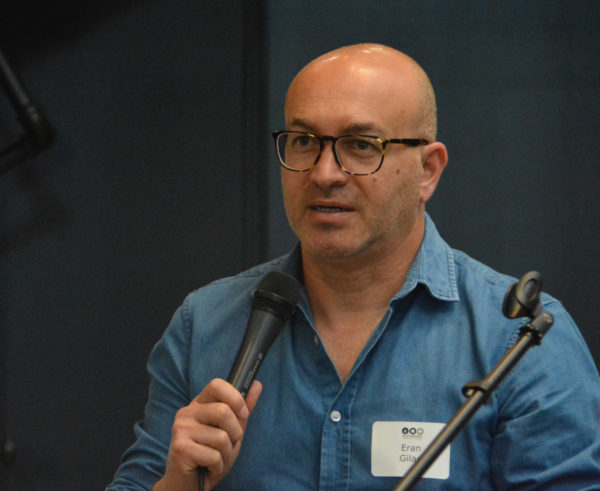
“Who in the value chain is going to be replaced by you?” asked Scopus Ventures Managing Partner Eran Gilad. “I would use the next few months to become crystal clear on that.”
“In the area of medicinal cannabis), the quality is ever so important,” Kara said. “There are things that our eyes cannot spot, but the camera can.”
Joseph told the panel he’d interviewed a cannabis grower in Colorado.
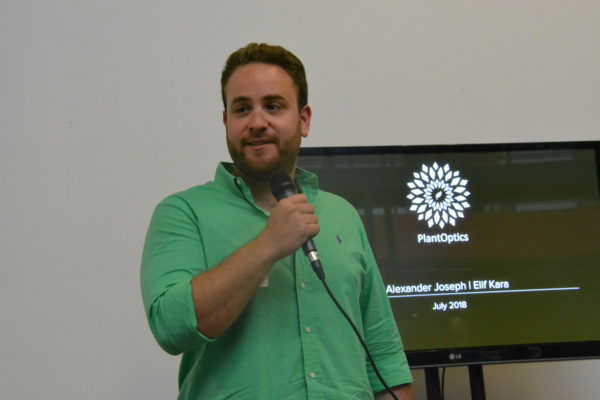
“He’s worried when he goes out to lunch (because the plants droop to one side). So I think the big thing is monitoring 24 hours a day, and from the anomaly side, replacing some of the workers.
“That would be long-term. We’re far away from that.”
The journey continues
“Demo Day” 2018, California edition, had flown by.
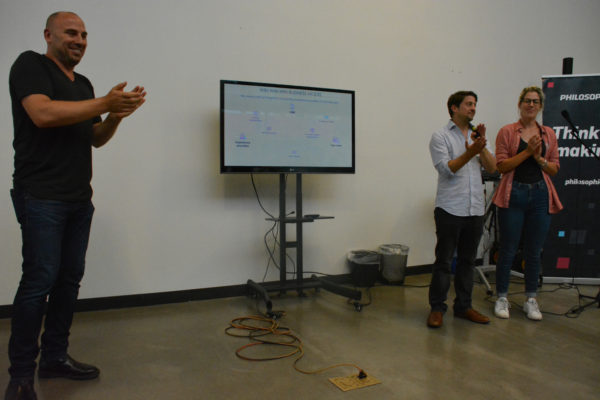
“I promised (we’d be done at two, so we need to stop here and let people go if they have other commitments),” Dorfman said, a few minutes later.
But some attendees lingered.
Photographers snapped group pictures. Entrepreneurs chatted with possible future business contacts.
And IDEAS™ Immersion, 2018, had just taken another class of startup entrepreneurs a step closer to realizing their dreams.

